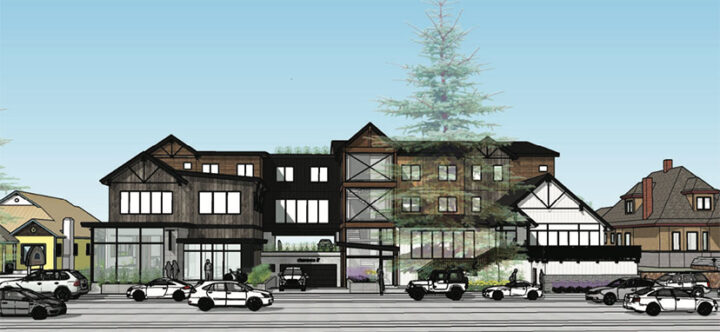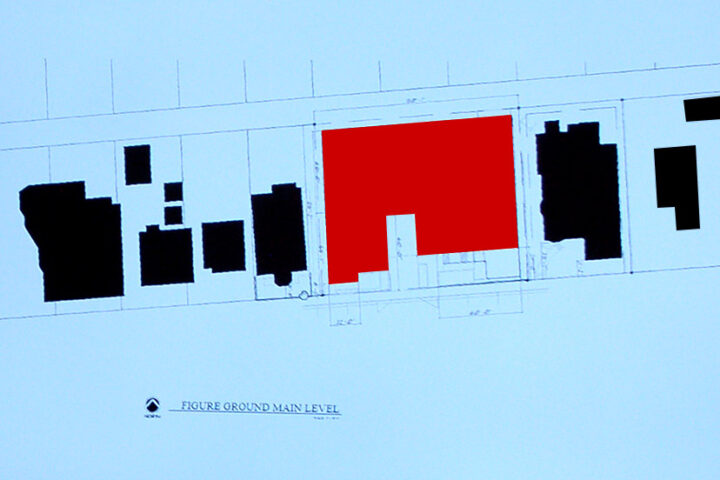We find there is a shift underway in our community. A shift that many small towns face as new money and new residents are attracted to those same things that brought us here.
An abundance of change is on the horizon for our community…
…We do not envy those sitting in positions to make decisions regarding the future of our community. Yet, there are rules and guidelines they have a duty to follow…
—from an editorial in the weekly Pagosa Springs SUN, by publisher Terri House, July 14, 2022.
That’s not an outrageous claim, that “new money and new residents are attracted to those same things that brought us here.” But of course, “the things that brought us here” will include a wide variety of attractions, depending on our personalities, our cultural backgrounds, and our personal wealth.
And other factors.
Some folks, arriving in Pagosa Springs for a look around, may have been attracted to a charming little bakery on Pagosa Street, for example, in the low-key commercial district known as ‘The East Village’.
We Love Food, and We Love What We Do
Pagosa Baking Company’s mission is to create and share hand crafted baked goods, nourishing meals and celebratory fare utilizing locally sourced organic ingredients as much as possible; provide personal proactive and responsive customer service; nurture strong beneficial relationships with and among our staff, customers, vendors, business partners, and the community at large; cultivate a growing dynamic business that functions profitably, contributing to a vibrant economic climate in our community.
Others may have been attracted to the high-end restaurant next door — the Alley House Grille — with its $65 Char Grilled Ribeye steaks, served with Garlic Chive Whipped Potatoes, Crispy Sweet & Sour Brussels Sprouts, Crispy Onions, and Chipotle Compound Butter.
Alley House Grille is the premier dining destination in Pagosa Springs offering an elegant but casual atmosphere featuring New American cuisine. A refined but friendly atmosphere in a beautifully restored 1912 cottage. We consistently provide a world-class dining experience while never forgetting our small town hospitality.
Different strokes for different folks.
As noted in Part Three of this editorial series, five of the seven Town Council members voted to deny a ‘density bonus’ for the 43,000-square-foot building proposed for three vacant lots located on Pagosa Street (aka Highway 160) in between the Pagosa Baking Company and the Alley House Grille.

Several business owners had turned out last July, when the Town Planning Commission first started looking at this proposed project, to speak in favor of the development.
None of those business owners who favor the development testified on February 7, when the density bonus was being considered. The testimony on February 7 came only from neighbors.
Two business owners — Kathy Keyes and Kirsten Skeehan, who own the Pagosa Baking Company next door — have consistently testified in opposition to the current building design, claiming that the development would violate the Land Use and Development Code, the Downtown Master Plan, and the Town’s Comprehensive Plan. They have not spoken in opposition to development per se on the vacant parcels, but rather, in opposition to the relatively massive size of the proposed building.
Here’s a comparison of the building footprint of the proposed building, compared to the neighboring properties.

In addition to its large footprint, the building, as currently proposed, would be the only three-story building in the East Village.
This controversy points up an interesting relationship in our little town. Businessman Marty Rose is part owner of the Alley House Grille, on the east of the proposed building, and he’s also one of the partners proposing the 232 Pagosa Street development. There are indications that Alley House customers will be parking in the proposed parking garages — presumably, for free, considering they will be paying $65 for a Ribeye steak, and who knows how much for a glass of wine.
On the west side of the vacant lots, we have partners Kathy Keyes and Kisten Sheehan, owners of the Pagosa Baling Company, urging the Town to disallow a 43,000-square-foot monstrosity next door — and require the developers bring forward a design that ‘fits’ the character of the neighborhood.
Thus illustrating America’s split personality. On the one hand, we have this vague notion that property owners should have the right to construct whatever type of building they wish, on their own property, and conduct any type of business they wish on that property and within that building.
On the other hand, we recognize that we were ‘brought here’ because — as Ms. House suggests — we were attracted to certain characteristics we found in Pagosa Springs, and most of us would really prefer to see the town stay pretty much the way we found it. To a certain extent, the Town’s 307-page Land Use and Development Code (LUDC) aims to prevent the town from changing in unpleasant ways, by discouraging the types of development that we supposedly don’t want. Supposedly, we don’t want our buildings to be either too small (because then poor people might move into them) or too big (because then they might block the sun, or the view… and generate parking issues… and otherwise look obnoxious.)
Like Goldilocks, we want the porridge that’s ‘just right’. And we expect our governments to supervise the porridge.
Meanwhile, the folks that have no problem with ‘too big’ tend to be the wealthier folks in the community, and some have an interest in lobbying elected and appointed officials — something most of us ‘regular folks’ don’t have time for, and wouldn’t feel comfortable doing anyway.
We do not envy those sitting in positions to make decisions regarding the future of our community. Yet, there are rules and guidelines they have a duty to follow…
I couldn’t have said it better than Ms. House did in her editorial last summer. And the local rules and guidelines are not necessarily defined by people with money. Not necessarily.
But I would say, the ‘general drift’ of the community has been, and continues to be, defined by a belief that ‘bigger buildings’ and ‘more money’ is not only our destiny — it’s also the preferred direction.
How is that belief working out for us?

